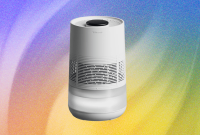
For some time now, I’ve been hoping that poorly optimized PC game ports would be a relic of the past. Unfortunately, that hasn’t happened just yet. Recent titles like Rise of the Ronin, Star Wars Jedi: Survivor, and Monster Hunter Wilds are prime examples of how many games still struggle with performance issues and heavy reliance on upscaling technologies like DLSS to achieve stable frame rates.
And it’s not just performance that’s a concern. The absence of ultrawide support in numerous games is worrisome, especially since ultrawide monitors have gained significant traction in homes everywhere. Amid these disappointments, Stellar Blade from Shift Up stands out as a standout exception, delivering impressive performance and optimization, including support for ultrawide displays up to a 32:9 aspect ratio.
This issue seeps into cutscenes as well; some games that do support ultrawide displays still introduce black bars during these sequences. While I understand that this is often a measure to avoid glitches, it would be great to see more titles offer the option to disable those black bars, similar to what some games already do.
There are numerous popular titles that still lack ultrawide support, and while I won’t delve into that again, Stellar Blade has proven to be another solid addition to the PlayStation 5 lineup, running smoothly across different user setups. This serves as a reminder for other developers to step up their game and prioritize optimization.
Performance-wise, Stellar Blade really impresses. On my Asus ROG Ally, I’ve managed to hit over 60 fps at 1080p on medium settings, occasionally reaching the low 80s. Enabling AMD Frame Generation takes the frame rate even higher, peaking at an impressive 112 fps. Crucially, this increase doesn’t come at the cost of a choppy experience, as it’s built on a solid 60 fps baseline.
On the Steam Deck, achieving 60 fps at lower settings is also easy, making it one of the very few games that can proudly wear the "Deck Verified" badge. If you’re using a more powerful device like the MSI Claw 8 AI+, your gaming experience will only get better.
On the desktop side, Stellar Blade consistently runs over 100 fps at the highest settings, even without relying on Nvidia’s Frame Generation. Powered by an RTX 4080 Super and an AMD Ryzen 7 5700X3D, it showcases the capabilities of modern PC hardware when games are properly optimized.
It’s important to clarify that while there are other games that manage to deliver decent optimization, there are still too many subpar ports in the triple-A arena. These problem titles can frustrate gamers who invest in high-end hardware. There’s only so much these powerful systems can do when faced with a poorly optimized game.
As handheld gaming PCs continue to grow in popularity—some featuring robust hardware while others, like the Steam Deck, are less powerful—the success of ports like Stellar Blade is encouraging. I genuinely hope that game developers and publishers take note of this success as a blueprint for future titles.




